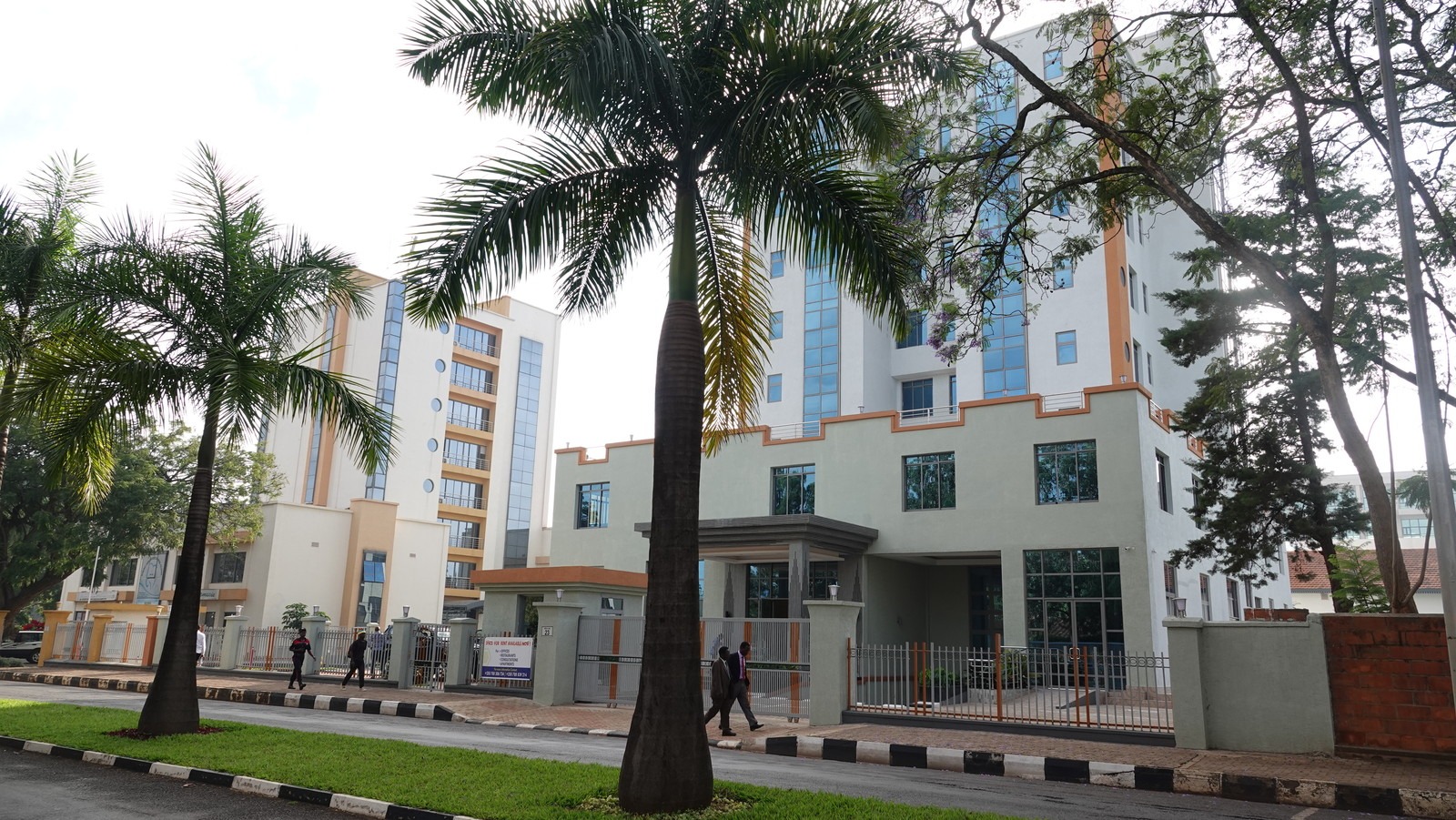History of Seventh-day Adventist Church In Rwanda.

Rwanda – A Diverse Republic in East-Central Africa
Nestled in the heart of east-central Africa lies the vibrant republic of Rwanda, a nation of rich diversity and culture. This remarkable country is a proud member of the East-Central Africa Division of Seventh-day Adventists, where faith and community are deeply intertwined.
Land of Abundance and Diversity
With an expansive territory spanning 26,338 square kilometers (10,169 square miles) and a burgeoning population of 12,187,400 as of 2018, Rwanda stands as Africa’s most densely populated country, with a remarkable 485 people residing in every square kilometer.
A Growing Adventist Presence
In 2017, Rwanda boasted a thriving community of 854,958 Seventh-day Adventist Church members, equivalent to approximately 698 Adventists for every 10,000 residents. These devoted followers congregated in 1,844 Adventist churches, 691 companies, and were guided by 193 ordained ministers. The spiritual life of Adventists in Rwanda is overseen by the Rwanda Union Mission, an integral part of the East-Central Africa Division.
Rwanda’s Unique Geography
Rwanda’s geography is a testament to its diversity, with lush savannas stretching across the eastern landscape, and majestic mountains dominating the western regions. This captivating contrast earned the nation its moniker, the “Land of a Thousand Hills.” Elevated at an average of 1,600 meters above sea level, Rwanda enjoys a temperate and subtropical climate characterized by two rainy seasons and two dry seasons annually. The nation’s young and predominantly rural population thrives amidst this natural splendor.
Language and History
Rwanda is a nation of three official languages: Kinyarwanda, French, and English, with Kiswahili also making its presence felt in commercial hubs and on national radio broadcasts. Unlike many African nations, Rwanda’s destiny was not shaped at the 1884 Berlin Conference. Instead, it emerged as a German territory following a 1890 conference in Brussels. The German presence remained relatively hands-off, preserving the existing social order and empowering local chiefs.
Belgian colonial forces later assumed control during World War I, initiating a period of more direct colonial rule. Belgium instituted comprehensive reforms, simplifying and centralizing the power structure while launching ambitious projects in education, healthcare, infrastructure, and agriculture. These efforts aimed to alleviate famine through new crops and enhanced farming techniques. Rwanda remained under Belgian administration until gaining independence in July 1962.
Recent History and Progress
In recent decades, Rwanda has garnered international attention due to the challenges posed by its three ethnic groups: Hutu, Tutsi, and Twa. These challenges reached a climax during the civil war and genocide of the 1990s. The nation embarked on a journey of reconciliation and justice, establishing the International Criminal Tribunal for Rwanda (ICTR) and reintroducing the Gacaca, a traditional village court system. Rwanda’s economy has experienced steady growth since 2000, with increased tourism and improvements in the Human Development Index. Poverty rates fell from 57 percent in 2006 to 45 percent in 2011, while life expectancy climbed from 46.6 years in 2000 to 59.7 years in 2015.
Diverse Religious Landscape
According to the 2012 census, Rwanda’s religious landscape is diverse, with Roman Catholics constituting 43.7 percent of the population, Protestants at 37.7 percent, Seventh-day Adventists at 11.8 percent, and Muslims at 2 percent. A minority of 0.2 percent claimed no religious beliefs, while 1.3 percent did not specify their religion. Traditional religion, officially adhered to by just 0.1 percent of the population, continues to influence Rwandans, with many seeing parallels between the Christian God and the traditional Rwandan deity, Imana.
Seventh-day Adventist Arrival and Growth
The Seventh-day Adventist Church began its mission in Rwanda through the pioneering efforts of David Elie Delhove, a Belgian worker who saw the potential of this African land shortly after World War I. Delhove’s conviction led to the establishment of Gitwe Mission, situated on a ridge known as the Hill of Skulls, 5,643 feet above sea level. In 1920, Henri Monnier of Switzerland launched the Buganza Mission, relocating it near Ruhengeri in 1921.
The Rwankeri dispensary, founded by Maria Matter and her brother, played a vital role in healthcare. The early years witnessed notable conversions, with the first baptisms taking place in 1924. In 1925, Maria Nyirabigwagwa became the first baptized woman. Schools were also established, and dedicated teachers like Yohana Ruvugihomvu and Paulo Rwangezeho paved the way for further growth. Yohana and Paulo were later ordained as ministers in 1934.
Pastor Monnier’s prolonged stay until 1940 enabled him to translate substantial portions of the Bible into Kinyarwanda, an achievement embraced by the British and Foreign Bible Society. He also authored a popular Kinyarwanda grammar for English-speaking missionaries.
Formation of the Central African Union
In 1960, due to the burgeoning Seventh-day Adventist membership in the region, Rwanda and Burundi necessitated their union. Consequently, these countries were separated from the Congo Union and granted their own union, the Central African Union, headquartered in Bujumbura, Burundi.
A Tapestry of Fields
The SDA Church’s expansion in Rwanda resulted in the creation of various fields, each with its unique journey. The Kigali Field, inaugurated in 1965, extended its reach to Kigali, Byumba, and Kibungo, defying transportation challenges to spread the gospel.
South Rwanda Field experienced remarkable growth, eventually prompting a split in 1970. This division gave rise to South Rwanda Field, based in Butare, and Central Rwanda Field, centered in Gitwe.
West Rwanda Field, with its origins in Ngoma Mission during the 1930s, saw steady expansion into regions like Cyangugu. The church in this area gained prominence for its health ministry, particularly the Ngoma (Mugonero) Hospital.
Challenges and Resilience
The Adventist Church in Rwanda has faced its share of challenges, including the Genocide of Tutsis in 1994, which claimed the lives of many church members and workers. Despite these hurdles, the faith community perseveres, contributing actively to Rwanda’s development.
Rwanda Union Mission’s Foundation

In 1984, as the Seventh-day Adventist community continued to flourish, Rwanda established its own union: Rwanda Union Mission. R. G. Peck served as the first president, overseeing three fields: East Rwanda Field, North Rwanda Field, and South Rwanda Field. Challenges arose, but the church’s resilience endured.
Total Member Involvement (TMI)
May 2016 marked a significant milestone for Rwanda’s Adventist community with the “Total Member Involvement” (TMI) evangelism outreach. Led by General Conference president, Pastor Ted Wilson, and supported by Adventists from around the world, this initiative resulted in over 110,000 baptisms. New members were welcomed with open arms, and a total of 54 pastors were ordained to minister to the growing flock.
Church Administration and Institutions
As the adventist Church expanded, eight local church administrative units emerged, forming the Rwanda Union Mission. Additionally, educational and medical institutions have played pivotal roles in supporting the church’s work. These include the Adventist University of Central Africa, Gitwe Adventist Secondary School, Rwankeri Adventist Secondary School, and various health centers.
A Harmonious Bond with the Community
Despite being a relatively small nation, Rwanda houses the world’s largest concentration of Seventh-day Adventist members. Annual camp meetings and dedicated evangelism campaigns have united the faithful. Adventists in Rwanda have also established a network of schools, from kindergarten to tertiary level, actively participating in evangelism efforts.
A Bright Future
In October 2017, Rwanda’s Minister of State for Socio-Economic Development commended the Seventh-day Adventist Church for its significant contributions to the nation’s progress. As Rwanda looks ahead to a promising future, the SDA Church continues to address challenges in education, health ministry, pastoral training, and church construction, driven by a commitment to faith and service within the community.





